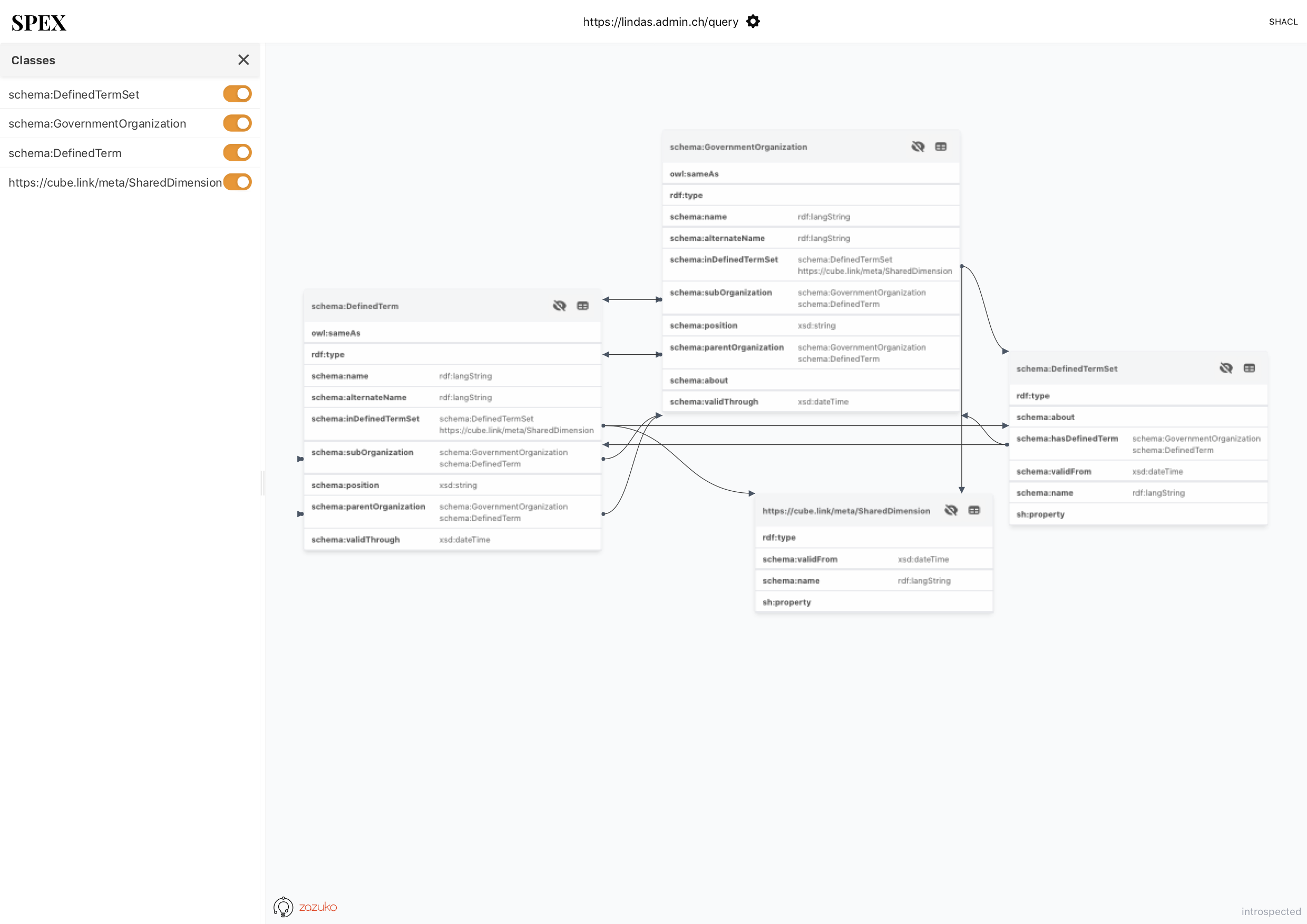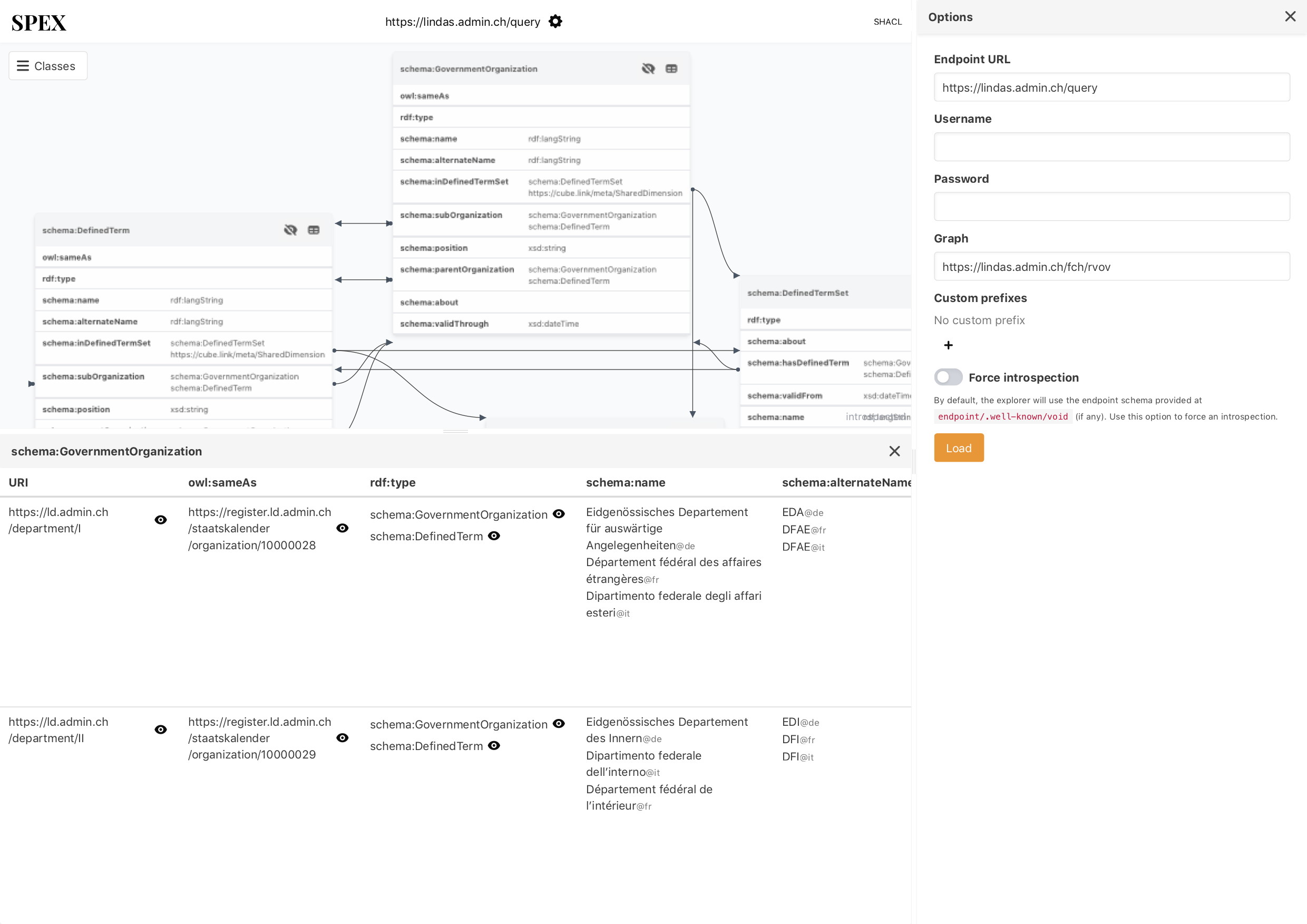Spex
SPEX introspects data residing in SPARQL endpoints. It uses the self-describing nature of RDF-based data to give you a better understanding of its schema. Once the schema is available, SPEX can be used to browse instances of this data and follow links to other data.
Until now, working with a previously unknown SPARQL-endpoint was very challenging and time-consuming, if you didn't know the data model. One had to start exploring the dataset with many different SPARQL-queries before getting to the right one. And even if one got there, it was very easy to miss some information due to lack of knowledge about the data model.
Here SPEX steps in, visualizes the properties, classes, variables and connections of the graph and thus gives you a good overview of the dataset and its schema. On click SPEX can show the data in list form and when working with complex datasets, it is also possible to hide classes.
To get an impression of the tool, you can try our live instance and have a look at:
Swiss Municipalities (AGVCH) (opens new window)
Governmental and Administrative Organisations (RVOV) (opens new window)
Didok (opens new window) Dataset containing all public transportation stops in Switzerland.
Nova (opens new window) Dataset containing the fare zones of public transportation in Switzerland.
...or you just point SPEX to any SPARQL-endpoint you want.


License
SPEX is released as Open Source Software under the MIT license.
Usage, Installation & Support
For installation and usage consult the according page (opens new window) on GitHub. Please report issues and feature requests on Github. If you have other questions please post a message in the RDF.community discussion forum (opens new window).
If you need a specific feature or support, get in touch. We're happy to provide consulting services, development and support.